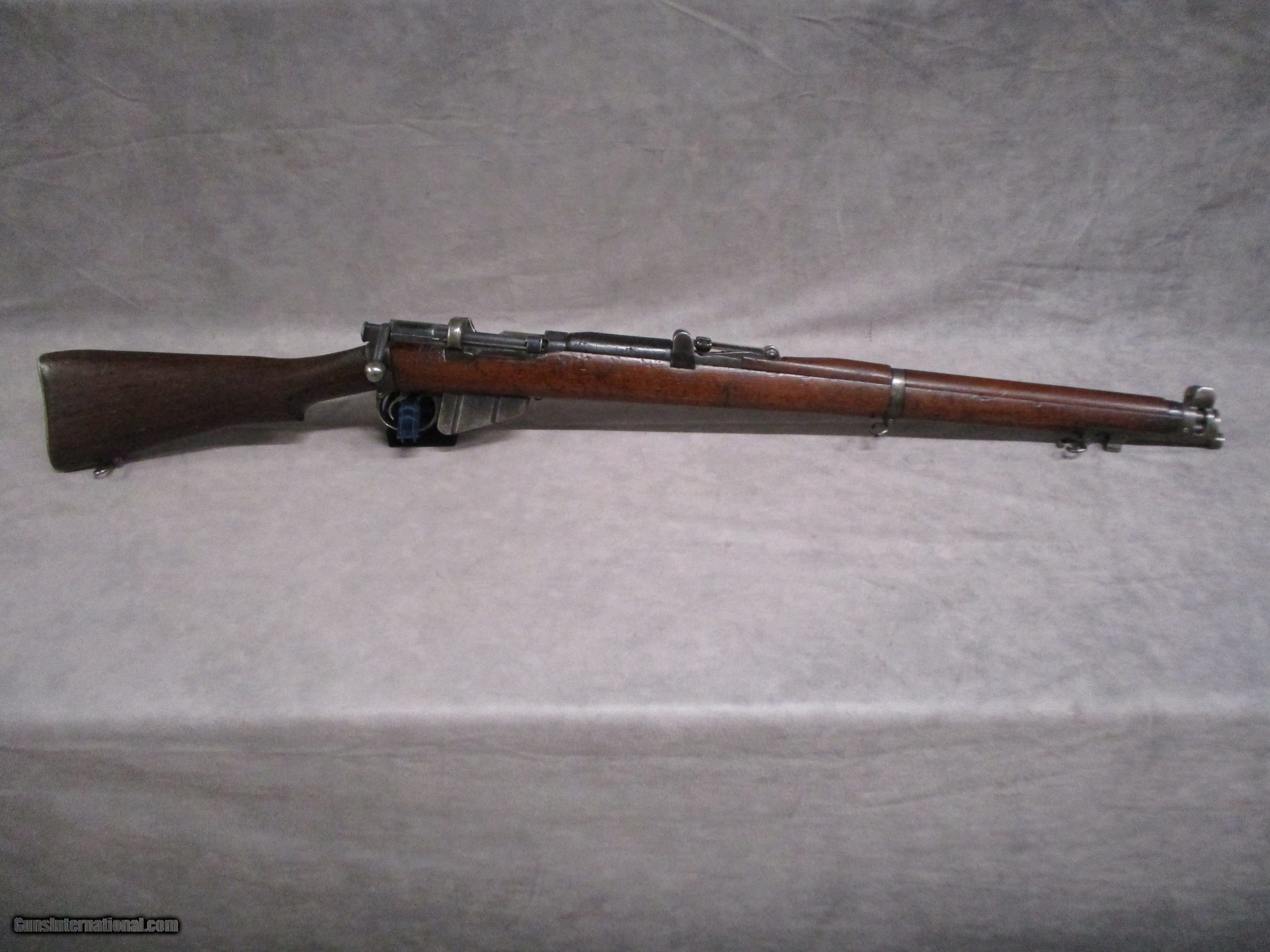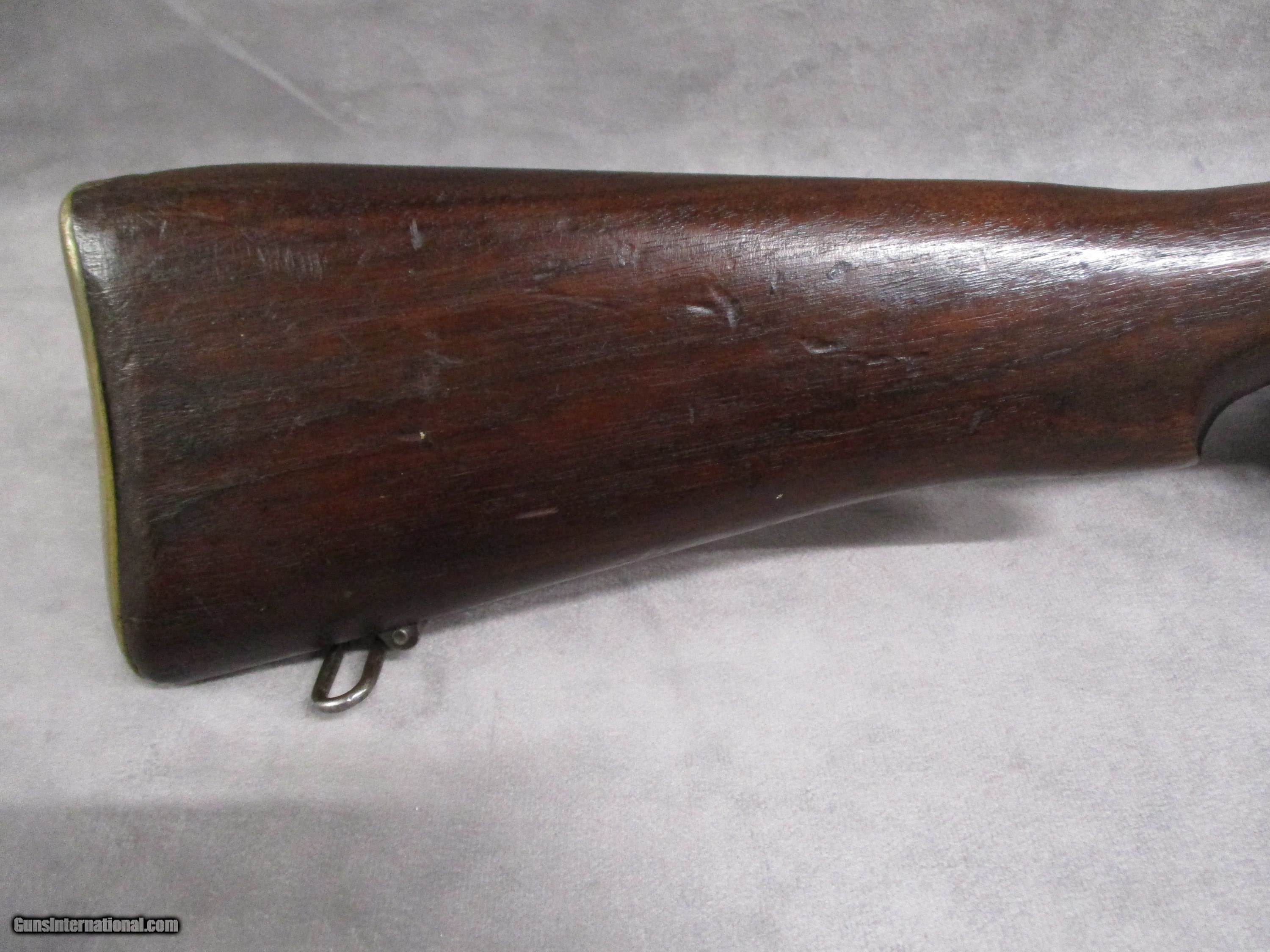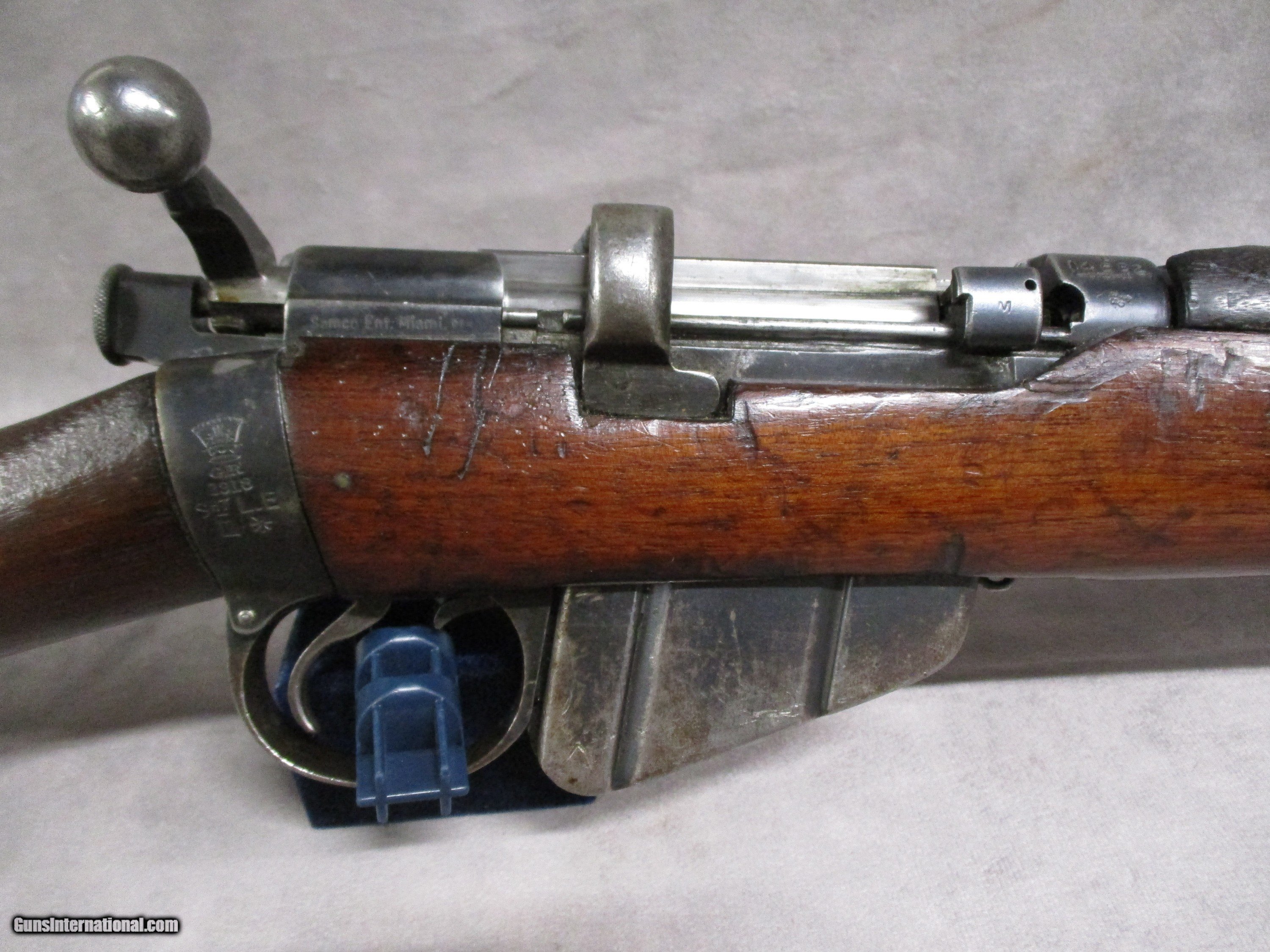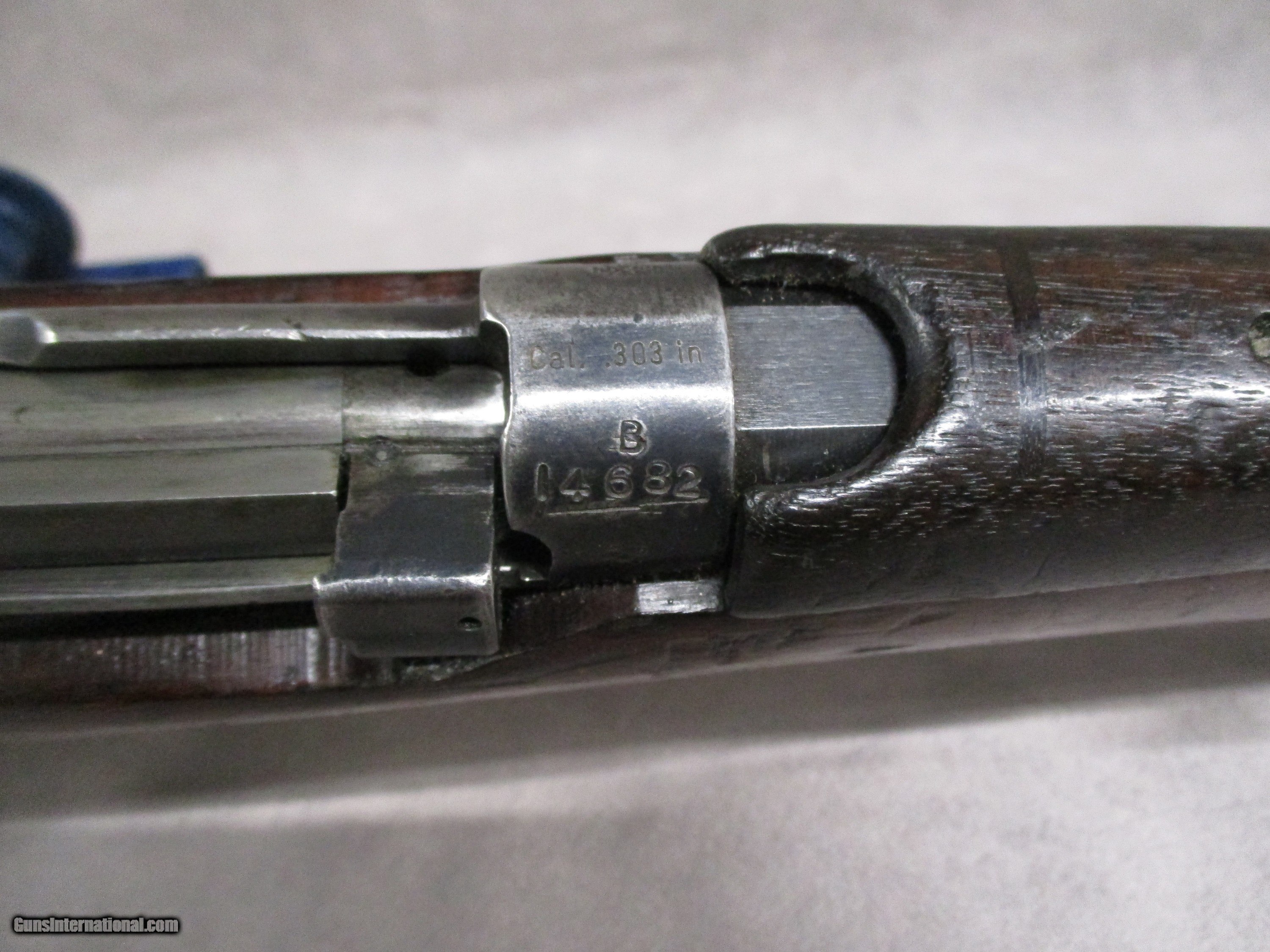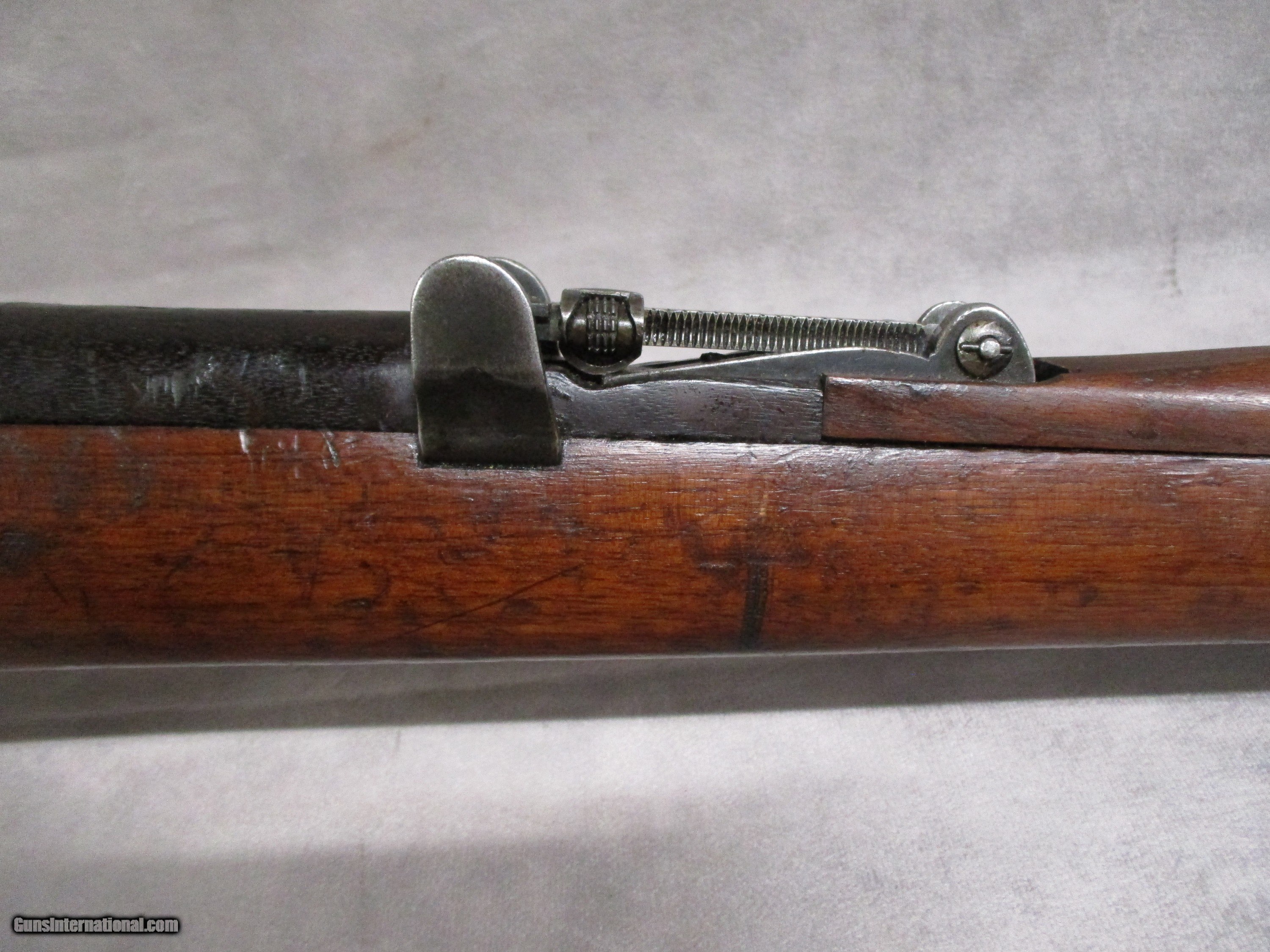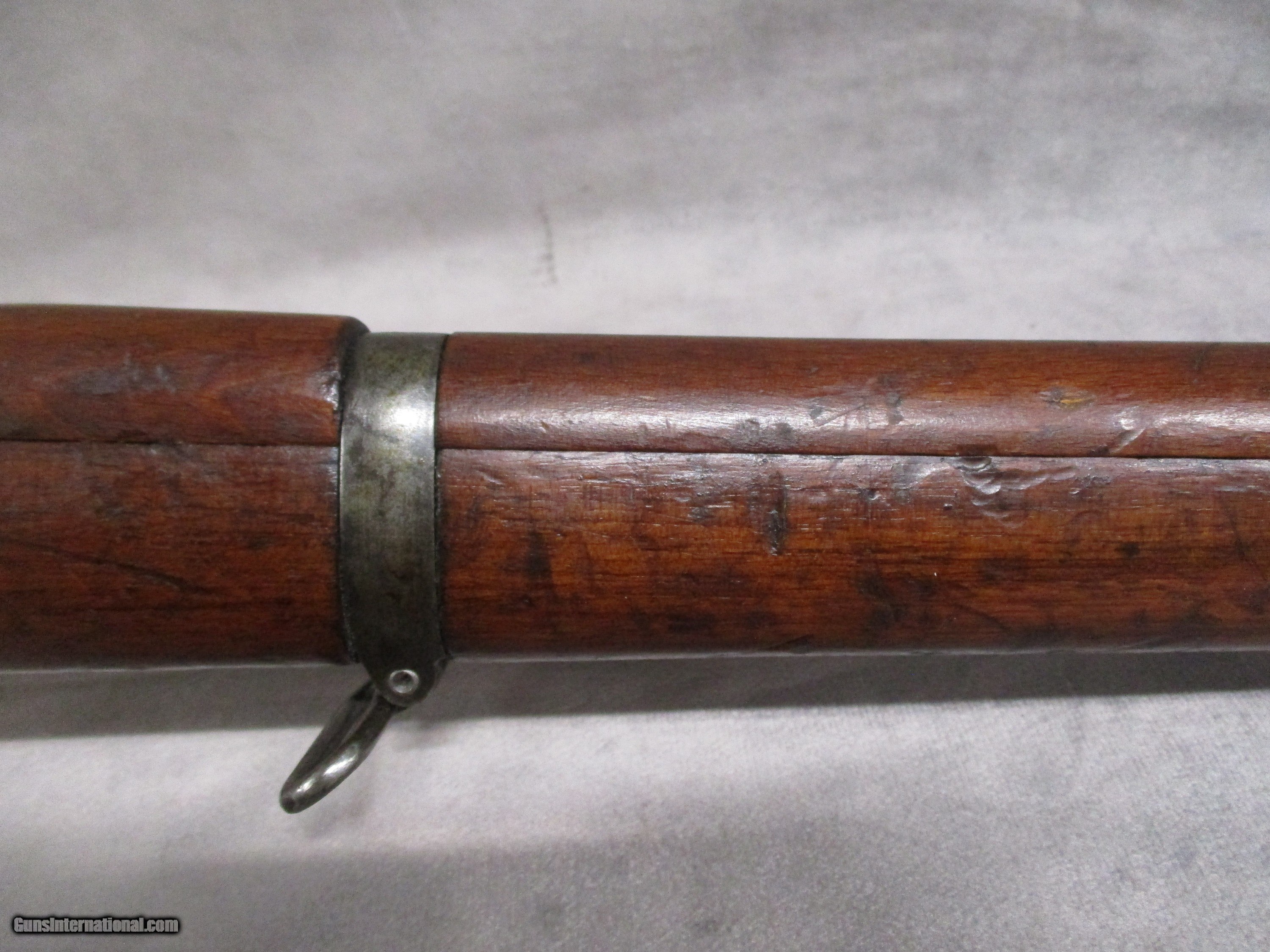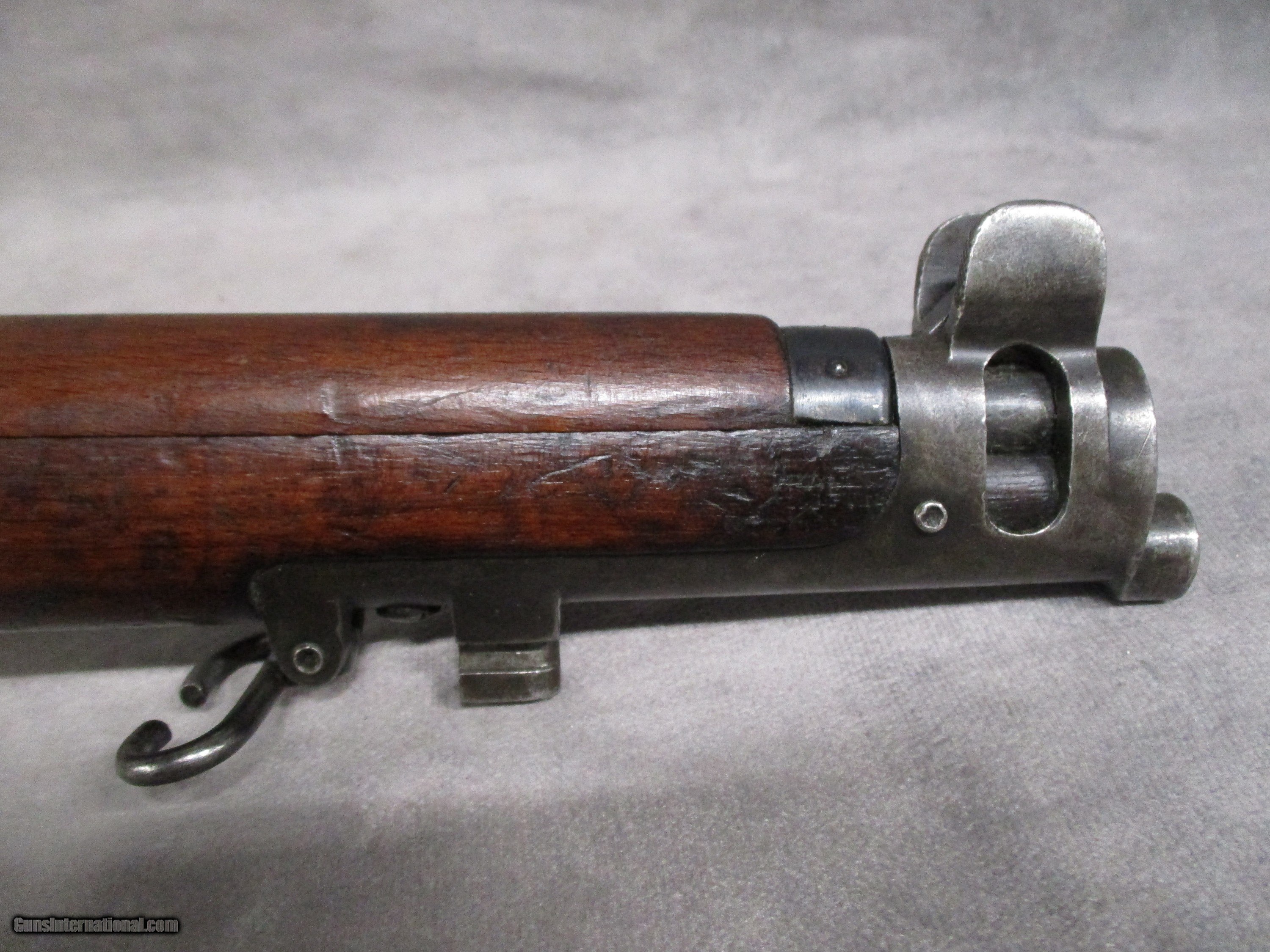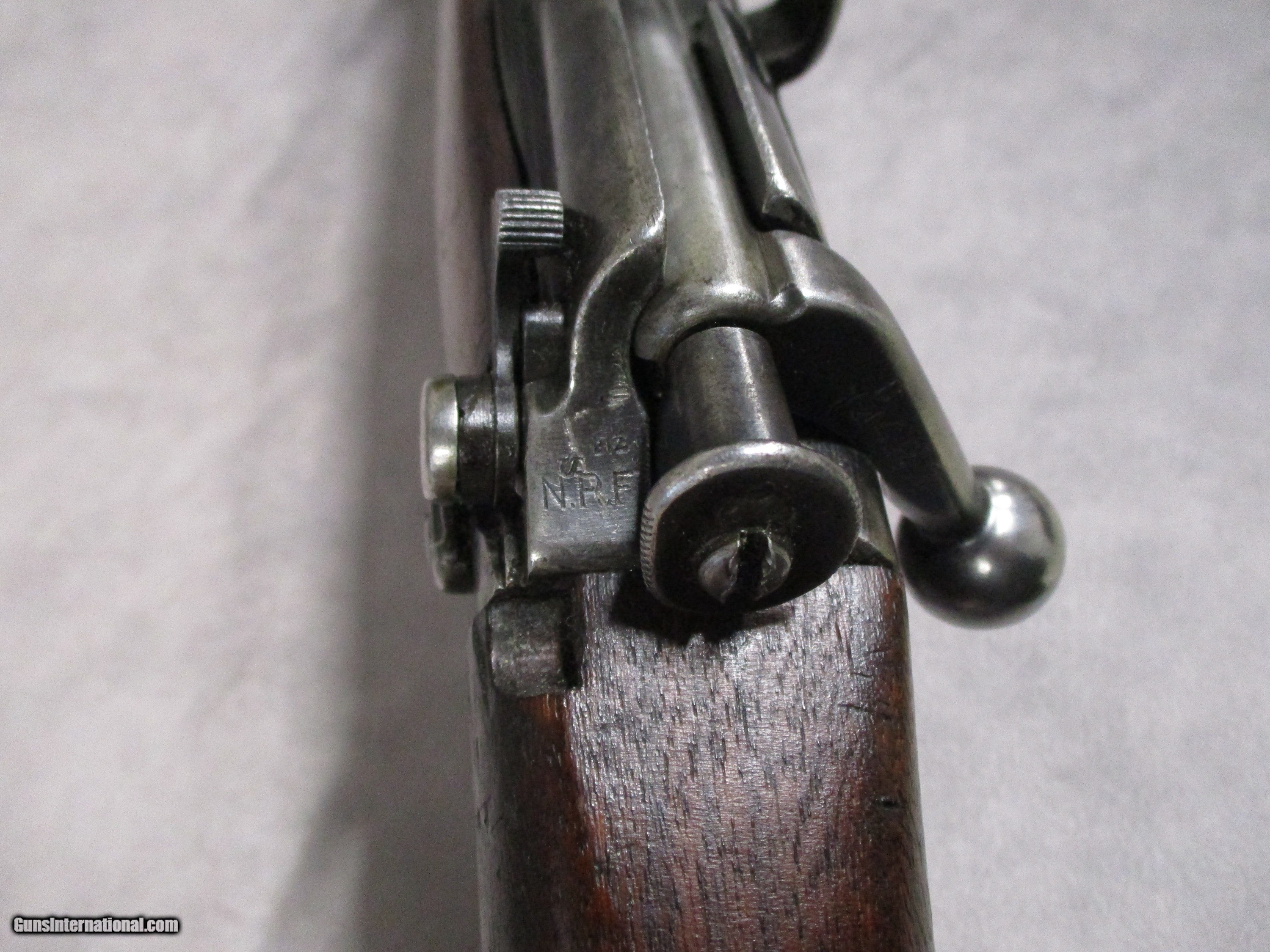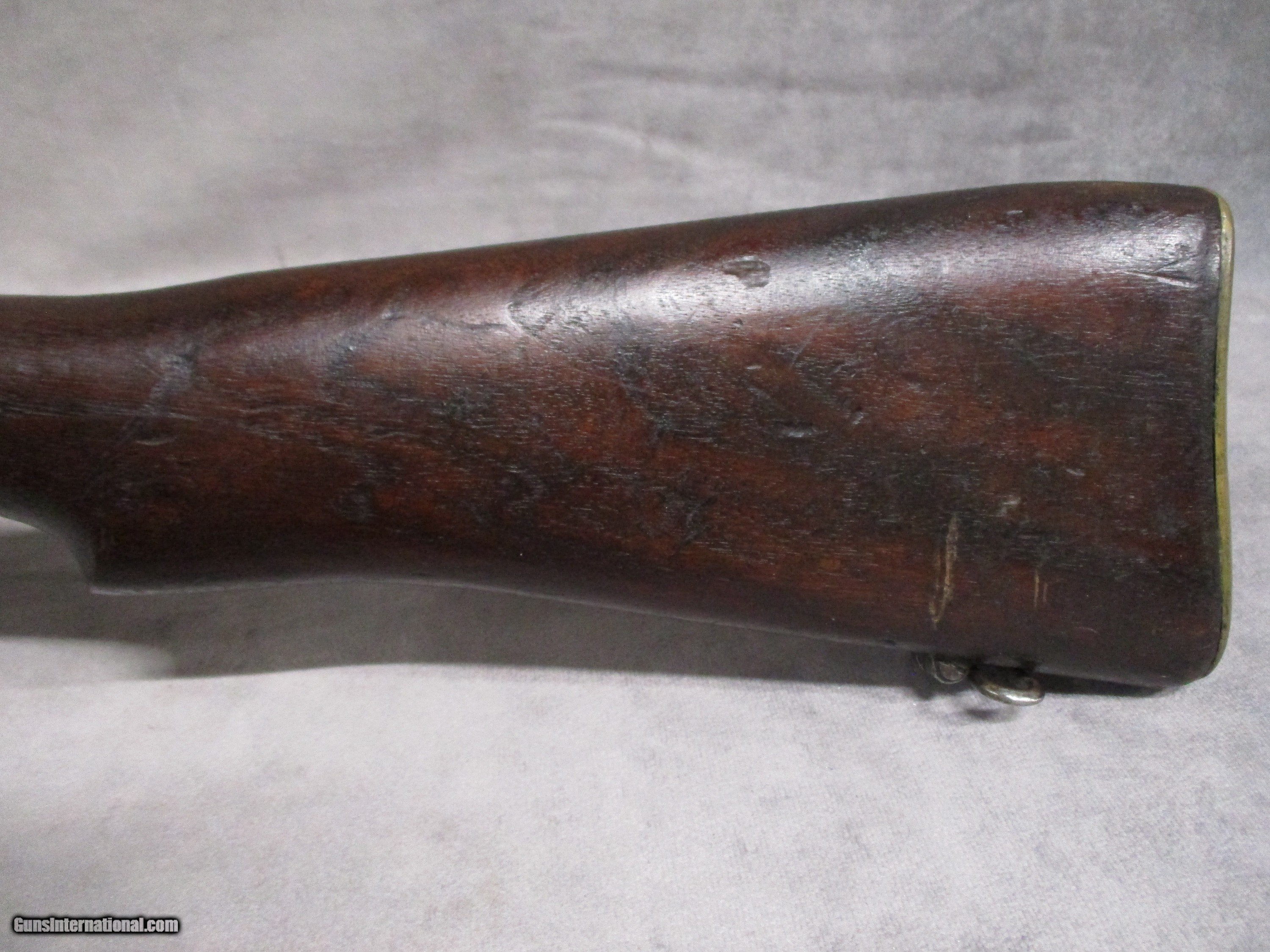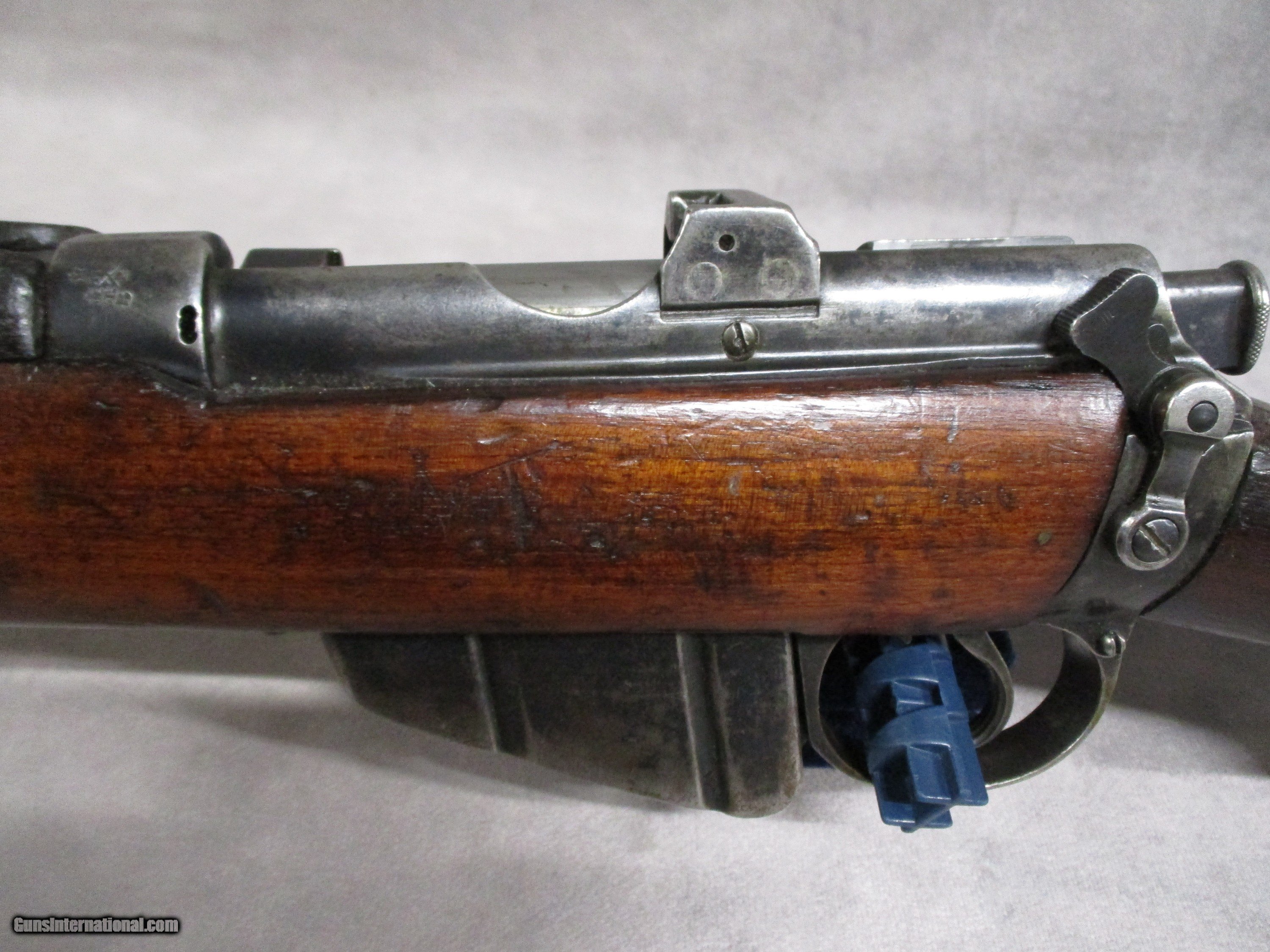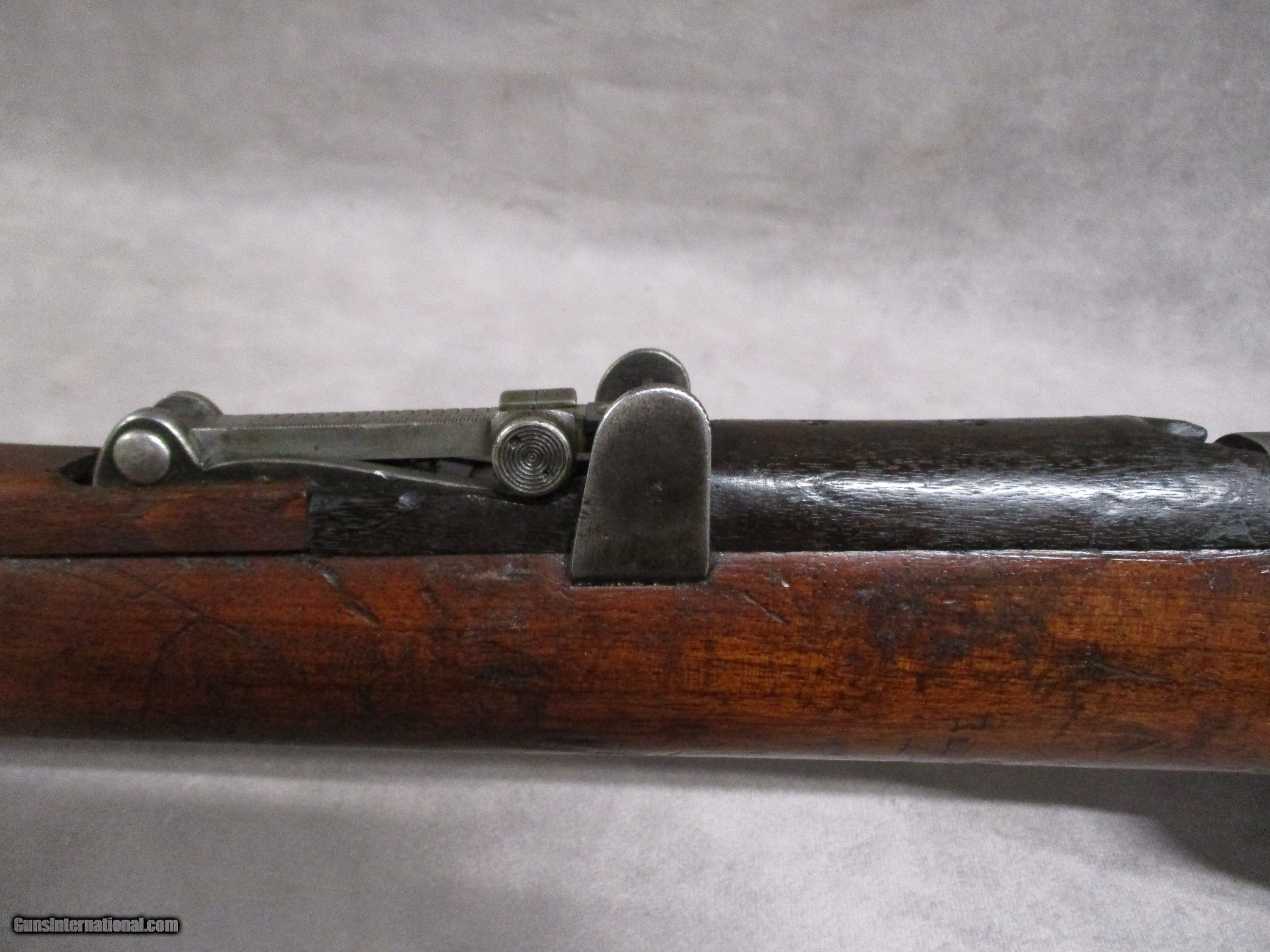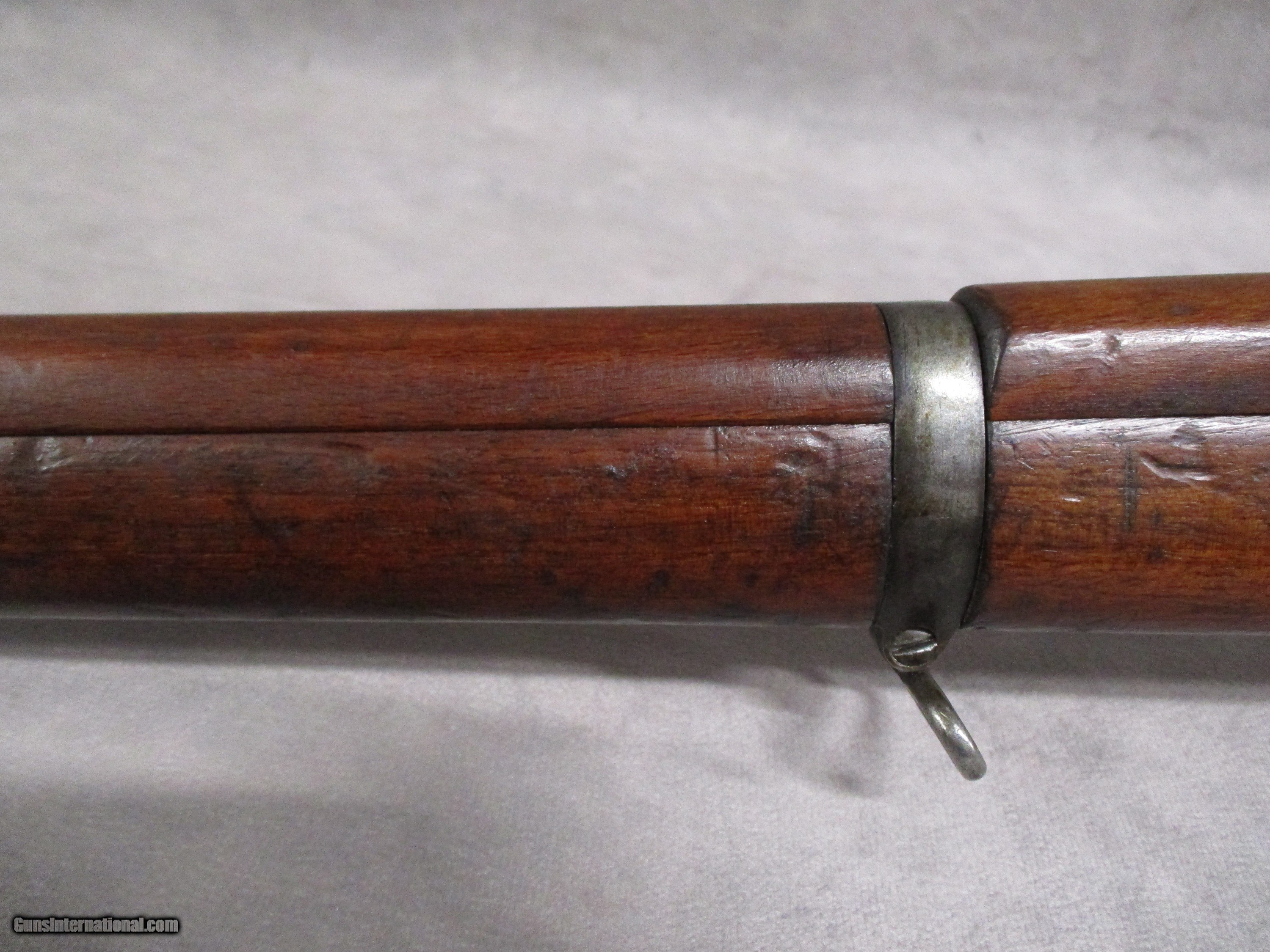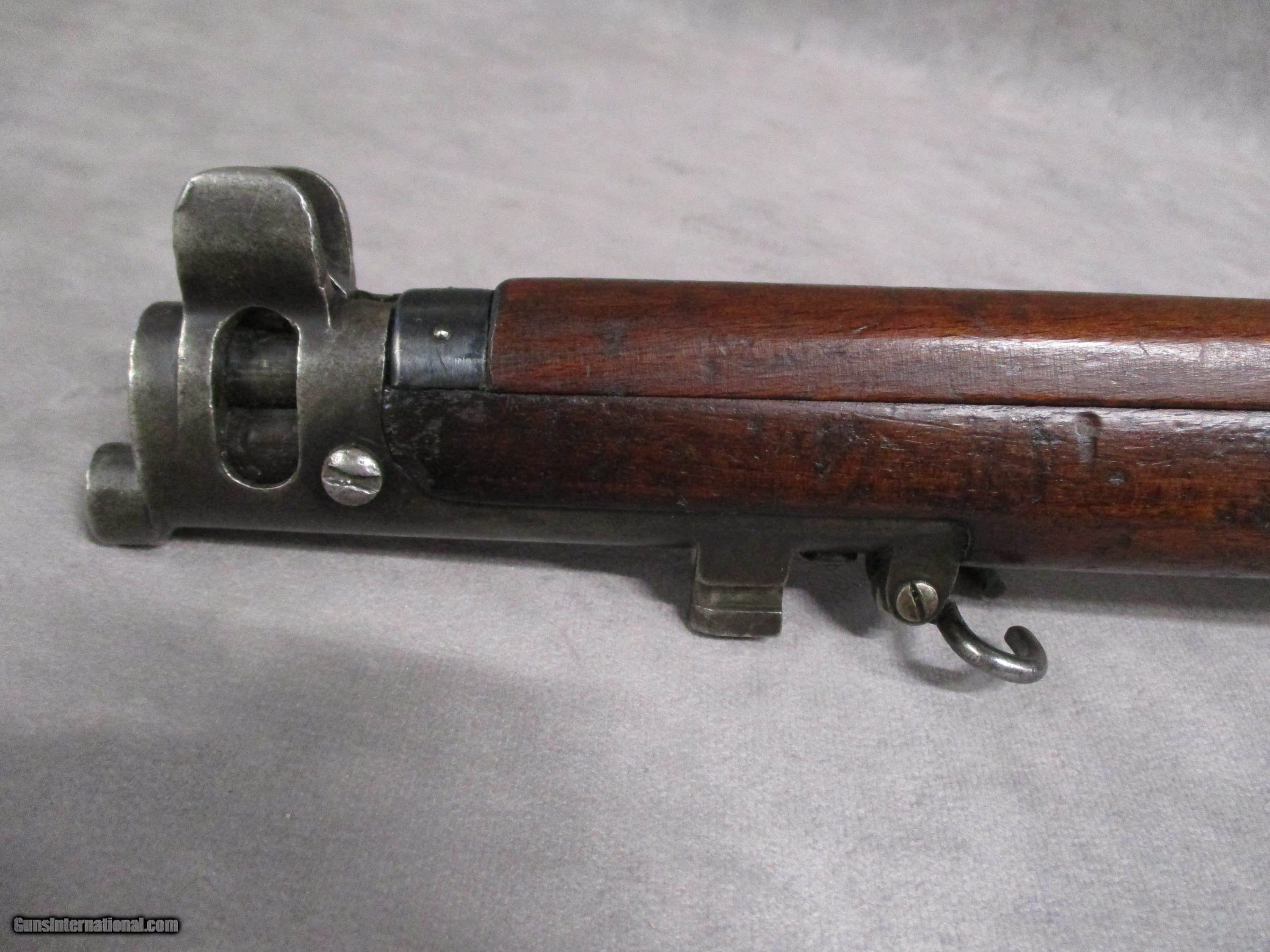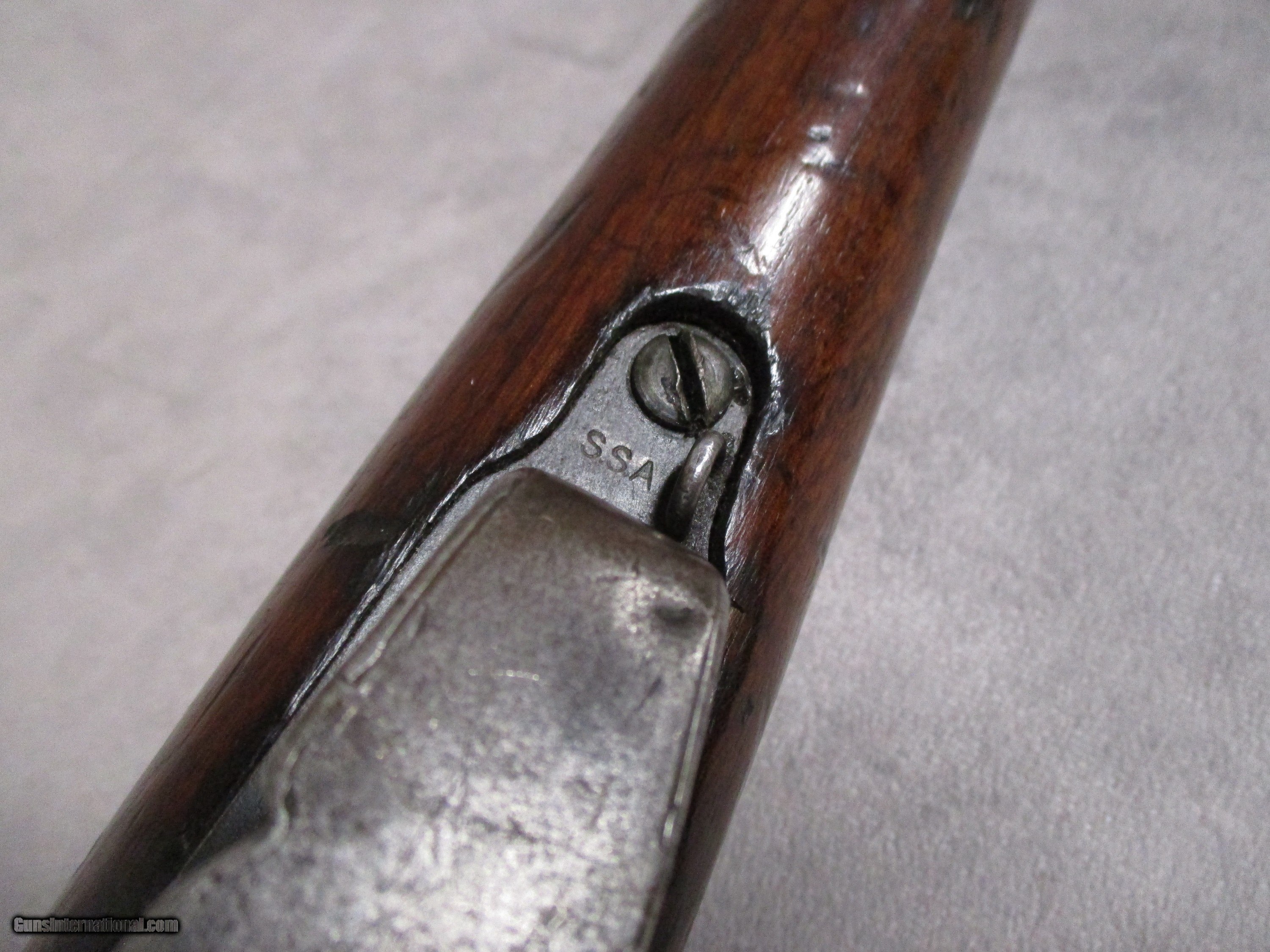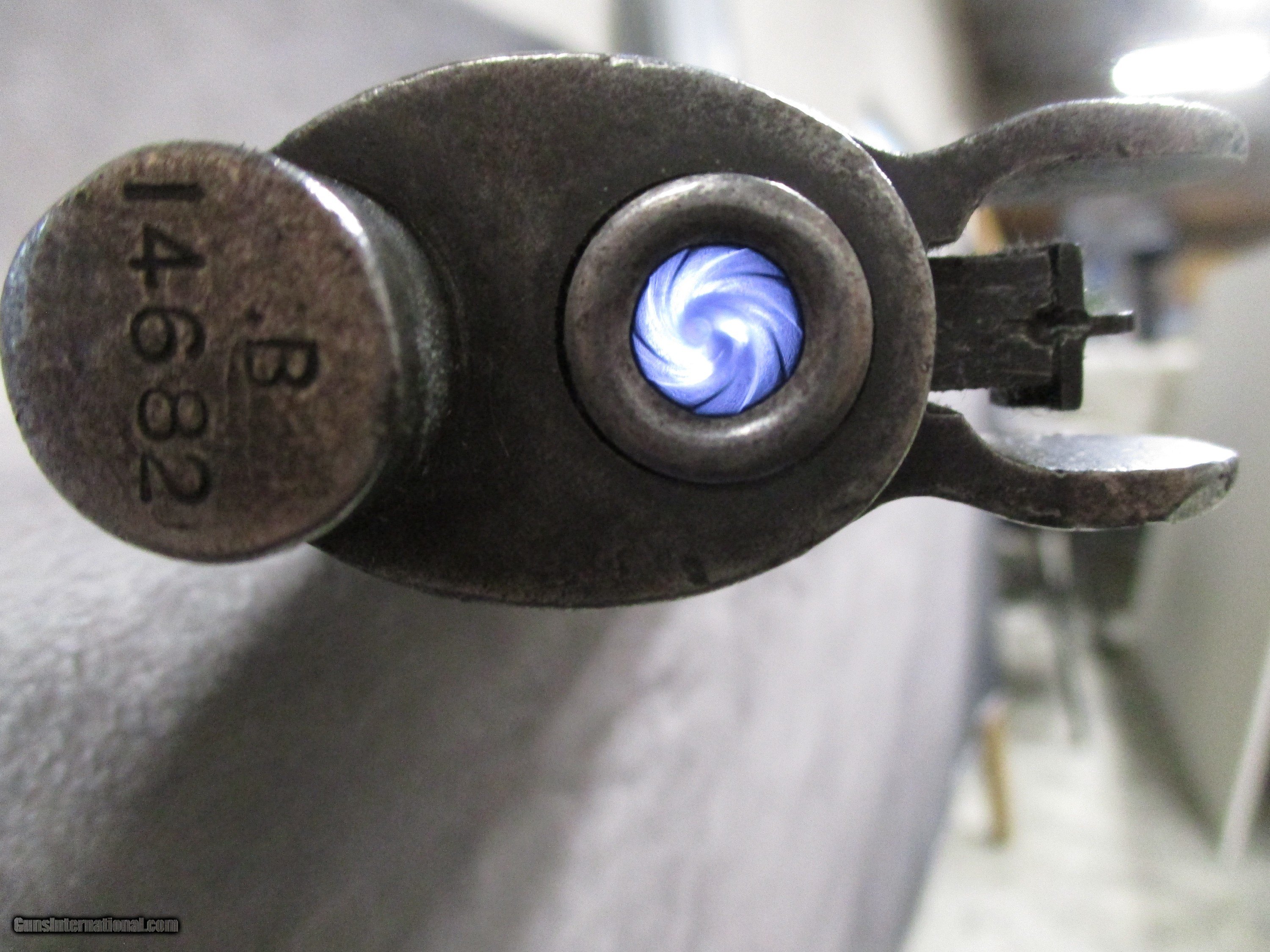Your Session is Ending
 The server has not detected any activity for the last 3 hours.
For your security, your session will expire in 2 minutes and you will be redirected to the Sign In page.
Would you like to stay signed in?
The server has not detected any activity for the last 3 hours.
For your security, your session will expire in 2 minutes and you will be redirected to the Sign In page.
Would you like to stay signed in?
N.R.F. Lee-Enfield No. 1 Mk. III * .303 British, Circa 1918, Excellent Bore
N.R.F. Lee-Enfield No. 1 Mk. III * .303 British, Circa 1918, Excellent Bore
Guns International #: 102458329
Seller's Inventory #: 2309-0176
Category - Military Rifles - British
- Military Arms
Seller's Information
When emailing or calling sellers direct,
please mention that you saw their listing on GunsInternational.com
Seller: Shooter's Supply, LLC.
Member Since: 3/16/16
First Name: Patrick
Last Name: Brown
State:
Tennessee
Zip: 37343
Country: United States
Phone:
(423) 875-4868
Active Listings: 76
Total Listings: 1350
Seller Type: FFL Dealer
Return Policy: 3 day inspection and return policy on used guns and accessories. No returns on new firearms.
We normally ship USPS Priority Mail which should be 2-day ship. Shipping is actual cost with a minimum of $30.00 for pistols and $50.00 for rifles/shotguns to ship to most of the 48 contiguous states. Shipping to Alaska may require an extra fee. Shipping insurance is available upon request for an extra fee. We cannot do international sales. As of November 2019, we no longer ship guns to California and Hawaii.
We normally ship USPS Priority Mail which should be 2-day ship. Shipping is actual cost with a minimum of $30.00 for pistols and $50.00 for rifles/shotguns to ship to most of the 48 contiguous states. Shipping to Alaska may require an extra fee. Shipping insurance is available upon request for an extra fee. We cannot do international sales. As of November 2019, we no longer ship guns to California and Hawaii.
Payment Methods: Visa, Master Card, American Express, USPS Money Order. NO CREDIT CARD FEES!!!
About Us: We are a small family owned business located in Hixson, Tennessee. Do you have firearms at home collecting dust? We have a lively consignment business. Our fee is 20% with a $50 minimum. Firearms are consigned for a an average period of 180 days but the length of period is negotiable. We also do handgun carry permit classes for the state of Tennessee. We have a nice indoor shooting range with reasonable rates. Please check us out at shooterssupply.
N.R.F. Lee-Enfield No. 1 Mk. III * .303 British, Circa 1918, Excellent Bore
Description:
This is one of the most famous bolt-action rifles ever made. The Lee-Enfield served the British empire in one model or another from around the turn-of-the-century to the 1990s. They are still used in certain parts of the world, particularly the Middle East. Unlike the United States, Germany, and the Soviet Union, Great Britain made no attempts to place a semi-auto rifle into production during the Second World War. Like Italy and Japan, Great Britain felt that introducing a new rifle design would cause logistic problems that would be more trouble than it was worth to issue their soldiers with arms comparable to the M1 Garand, Gewehr 43 and SVT-40. In the end, only the M-1 Garand would see widespread use thanks to the strength of American industry and so could be issued in enough numbers. Both the Germans and Soviets had to continue relying on their older bolt action designs, the Mauser Karabiner 98k and the Mosin-Nagant 1891/30, both stablemates of the Lee-Enfield having been designed around the same timeframe at the end of the 19th Century. Despite being surpassed by semi-auto rifles in other countries, the Lee-Enfield is an excellent design with many advantages over other bolt action designs. It’s cock-on-closing feature enabled fast, well-aimed fire. During some of the early battles of World War 1, British troops engaging in massed fire tactics with the Lee-Enfield No. 1 Mk. III, convinced attacking German soldiers that their opponents were equipped with machine guns. The rifles generous capacity of 10 rounds allowed British soldiers to perform what was called the “mad minute,” wherein the soldier would fire 20 to 30 aimed rounds in 60 seconds. Indeed, the current world record for aimed, bolt-action was set in 1914 by an instructor in the British Army who placed 38 rounds into a 12-inch-wide target at 300 yards in 1 minute. Imagine having to attempt such a feat today. One important note is that while the No. 4 Mk 1 was first issued in late 1939, it was not officially adopted for use until 1941, and by no means did it immediately replace the older models. Thus, many of the Lee-Enfield’s used in the early battles of World War 2 in Europe, North Africa, and the Pacific were the older No. 1 Mk III and No. 1 Mk III*.
The example shown here is a No. 1 Mark III*, specifically a peddle scheme rifle. Peddle scheme rifles are rifles that have been assembled by one of the big three manufacturers (LSA, BSA, and Enfield) using a combination of their own parts and those made by smaller manufacturers to make up for any shortages of their own components. This was done via the Rifle Components Pool. What this means is that, rather than having to wait for production of certain parts to catch up, they could use parts from the pool (including receivers) to finish the rifles and get them sent out quicker. One of the parts suppliers was Standard Small Arms or S.S.A., a company which later became the National Rifle Factory (N.R.F.) No. 1 on June 1st, 1918. Peddle scheme rifles are easy to identify by looking for the “S.S.A.” or “N.R.F.” stamp located at the left rear of the receiver body, or by the lack of a big three factory name stamping on the buttsocket. This rifle’s receiver is stamped “N.R.F.” although the bottom of the trigger guard is stamped “S.S.A.” The oddly shaped cocking piece is also an indicator of a peddle scheme rifle. Taking into consideration the fact that this rifle may have seen combat at the end of World War 1, and then had to go through all of World War 2, it is in good shape. At some point, most likely during a rebuild, the receiver’s original serial number was crossed out and another one stamped above so that the receiver’s number would match that of the rifle’s other parts, such as the bayonet boss and bolt. The rifle was imported into the U.S. by Samco Enterprises of Miami, FL, and the rifle is marked as such in small letters on the right side of the receiver. The receiver exhibits the usual amount of finish wear found on military rifles. The barrel, being mostly hidden under the handguard and front sight assembly retains a great deal of its original finish. The wood furniture is in the usual shape expected of a rifle that has been used in a world war, with visible dings and dents present. Some of these could probably be steamed out. Fortunately, there are no visible cracks in the wood. Some of the metal screws have buggered edges. In stark contrast, the bore is in fantastic shape, especially considering the rifle’s age (105 years). The rifling looks brand new, though some copper fouling may be present. The rifle should prove to be very accurate provided the shooter does their part. The cartridge the Lee-Enfield is chambered for, the .303 British, is very well known and one of the best rimmed cartridges ever designed. Though not normally as powerful as say, the .308 Winchester, the .303 British is leaps and bounds above the .30-30 and .30-40 Krag cartridges to which it is often compared. In fact, the cartridge tends to be underloaded at the factory, so it can be used in the older No.1 Mk III actions.
SOLD
Rifle Caliber: .303 British
Manufacturer: National Rifle Factory
Model: Lee-Enfield No. 1 Mk. III*
Serial Number: 14682
Bore: Rifled, 5 grooves, 1:10 inches (1 in 254 mm) LH twist
Ejectors: Manual ejection
Condition: Good
Barrels: Carbon Steel
Barrel Type: Standard Lee-Enfield
Action: Lee-Enfield action, cock-on-closing
Triggers: Single, serrated
Stock: Wood
Fore End: Wood
Butt Pad: Brass plate
LOP: 13.25 inches (336.55 mm)
Finish: Blued/Patina
Weight: 8.75 lbs.
Sights: Ramp rear sight, post front, sight radius 19.5 inches (495.3 mm)
Manufacture Date: 1918
Description:
This is one of the most famous bolt-action rifles ever made. The Lee-Enfield served the British empire in one model or another from around the turn-of-the-century to the 1990s. They are still used in certain parts of the world, particularly the Middle East. Unlike the United States, Germany, and the Soviet Union, Great Britain made no attempts to place a semi-auto rifle into production during the Second World War. Like Italy and Japan, Great Britain felt that introducing a new rifle design would cause logistic problems that would be more trouble than it was worth to issue their soldiers with arms comparable to the M1 Garand, Gewehr 43 and SVT-40. In the end, only the M-1 Garand would see widespread use thanks to the strength of American industry and so could be issued in enough numbers. Both the Germans and Soviets had to continue relying on their older bolt action designs, the Mauser Karabiner 98k and the Mosin-Nagant 1891/30, both stablemates of the Lee-Enfield having been designed around the same timeframe at the end of the 19th Century. Despite being surpassed by semi-auto rifles in other countries, the Lee-Enfield is an excellent design with many advantages over other bolt action designs. It’s cock-on-closing feature enabled fast, well-aimed fire. During some of the early battles of World War 1, British troops engaging in massed fire tactics with the Lee-Enfield No. 1 Mk. III, convinced attacking German soldiers that their opponents were equipped with machine guns. The rifles generous capacity of 10 rounds allowed British soldiers to perform what was called the “mad minute,” wherein the soldier would fire 20 to 30 aimed rounds in 60 seconds. Indeed, the current world record for aimed, bolt-action was set in 1914 by an instructor in the British Army who placed 38 rounds into a 12-inch-wide target at 300 yards in 1 minute. Imagine having to attempt such a feat today. One important note is that while the No. 4 Mk 1 was first issued in late 1939, it was not officially adopted for use until 1941, and by no means did it immediately replace the older models. Thus, many of the Lee-Enfield’s used in the early battles of World War 2 in Europe, North Africa, and the Pacific were the older No. 1 Mk III and No. 1 Mk III*.
The example shown here is a No. 1 Mark III*, specifically a peddle scheme rifle. Peddle scheme rifles are rifles that have been assembled by one of the big three manufacturers (LSA, BSA, and Enfield) using a combination of their own parts and those made by smaller manufacturers to make up for any shortages of their own components. This was done via the Rifle Components Pool. What this means is that, rather than having to wait for production of certain parts to catch up, they could use parts from the pool (including receivers) to finish the rifles and get them sent out quicker. One of the parts suppliers was Standard Small Arms or S.S.A., a company which later became the National Rifle Factory (N.R.F.) No. 1 on June 1st, 1918. Peddle scheme rifles are easy to identify by looking for the “S.S.A.” or “N.R.F.” stamp located at the left rear of the receiver body, or by the lack of a big three factory name stamping on the buttsocket. This rifle’s receiver is stamped “N.R.F.” although the bottom of the trigger guard is stamped “S.S.A.” The oddly shaped cocking piece is also an indicator of a peddle scheme rifle. Taking into consideration the fact that this rifle may have seen combat at the end of World War 1, and then had to go through all of World War 2, it is in good shape. At some point, most likely during a rebuild, the receiver’s original serial number was crossed out and another one stamped above so that the receiver’s number would match that of the rifle’s other parts, such as the bayonet boss and bolt. The rifle was imported into the U.S. by Samco Enterprises of Miami, FL, and the rifle is marked as such in small letters on the right side of the receiver. The receiver exhibits the usual amount of finish wear found on military rifles. The barrel, being mostly hidden under the handguard and front sight assembly retains a great deal of its original finish. The wood furniture is in the usual shape expected of a rifle that has been used in a world war, with visible dings and dents present. Some of these could probably be steamed out. Fortunately, there are no visible cracks in the wood. Some of the metal screws have buggered edges. In stark contrast, the bore is in fantastic shape, especially considering the rifle’s age (105 years). The rifling looks brand new, though some copper fouling may be present. The rifle should prove to be very accurate provided the shooter does their part. The cartridge the Lee-Enfield is chambered for, the .303 British, is very well known and one of the best rimmed cartridges ever designed. Though not normally as powerful as say, the .308 Winchester, the .303 British is leaps and bounds above the .30-30 and .30-40 Krag cartridges to which it is often compared. In fact, the cartridge tends to be underloaded at the factory, so it can be used in the older No.1 Mk III actions.
SOLD
Rifle Caliber: .303 British
Manufacturer: National Rifle Factory
Model: Lee-Enfield No. 1 Mk. III*
Serial Number: 14682
Bore: Rifled, 5 grooves, 1:10 inches (1 in 254 mm) LH twist
Ejectors: Manual ejection
Condition: Good
Barrels: Carbon Steel
Barrel Type: Standard Lee-Enfield
Action: Lee-Enfield action, cock-on-closing
Triggers: Single, serrated
Stock: Wood
Fore End: Wood
Butt Pad: Brass plate
LOP: 13.25 inches (336.55 mm)
Finish: Blued/Patina
Weight: 8.75 lbs.
Sights: Ramp rear sight, post front, sight radius 19.5 inches (495.3 mm)
Manufacture Date: 1918
Click Photo to Enlarge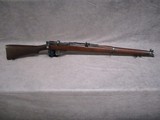
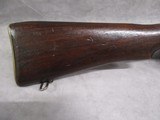
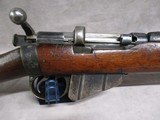
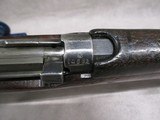
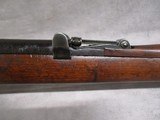
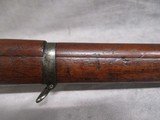
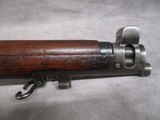
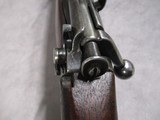
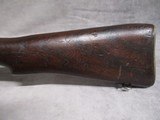
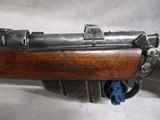
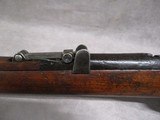
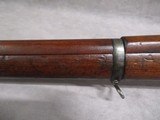
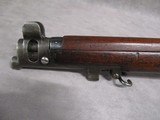
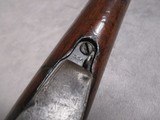
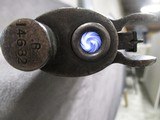
|
Guns International #: 102458329
Category - Military Rifles - British
- Military Arms
Seller's Information
When emailing or calling sellers direct,
please mention that you saw their listing on GunsInternational.com
Seller: Shooter's Supply, LLC.
Member Since: 3/16/16
First Name: Patrick
Last Name: Brown
State:
Tennessee
Zip: 37343
Country: United States
Phone:
(423) 875-4868
Active Listings: 76
Total Listings: 1350
Seller Type: FFL Dealer
Return Policy: 3 day inspection and return policy on used guns and accessories. No returns on new firearms.
We normally ship USPS Priority Mail which should be 2-day ship. Shipping is actual cost with a minimum of $30.00 for pistols and $50.00 for rifles/shotguns to ship to most of the 48 contiguous states. Shipping to Alaska may require an extra fee. Shipping insurance is available upon request for an extra fee. We cannot do international sales. As of November 2019, we no longer ship guns to California and Hawaii. Payment Methods: Visa, Master Card, American Express, USPS Money Order. NO CREDIT CARD FEES!!!
About Us: We are a small family owned business located in Hixson, Tennessee. Do you have firearms at home collecting dust? We have a lively consignment business. Our fee is 20% with a $50 minimum. Firearms are consigned for a an average period of 180 days but the length of period is negotiable. We also do handgun carry permit classes for the state of Tennessee. We have a nice indoor shooting range with reasonable rates. Please check us out at shooterssupply.
N.R.F. Lee-Enfield No. 1 Mk. III * .303 British, Circa 1918, Excellent Bore
Description: This is one of the most famous bolt-action rifles ever made. The Lee-Enfield served the British empire in one model or another from around the turn-of-the-century to the 1990s. They are still used in certain parts of the world, particularly the Middle East. Unlike the United States, Germany, and the Soviet Union, Great Britain made no attempts to place a semi-auto rifle into production during the Second World War. Like Italy and Japan, Great Britain felt that introducing a new rifle design would cause logistic problems that would be more trouble than it was worth to issue their soldiers with arms comparable to the M1 Garand, Gewehr 43 and SVT-40. In the end, only the M-1 Garand would see widespread use thanks to the strength of American industry and so could be issued in enough numbers. Both the Germans and Soviets had to continue relying on their older bolt action designs, the Mauser Karabiner 98k and the Mosin-Nagant 1891/30, both stablemates of the Lee-Enfield having been designed around the same timeframe at the end of the 19th Century. Despite being surpassed by semi-auto rifles in other countries, the Lee-Enfield is an excellent design with many advantages over other bolt action designs. It’s cock-on-closing feature enabled fast, well-aimed fire. During some of the early battles of World War 1, British troops engaging in massed fire tactics with the Lee-Enfield No. 1 Mk. III, convinced attacking German soldiers that their opponents were equipped with machine guns. The rifles generous capacity of 10 rounds allowed British soldiers to perform what was called the “mad minute,” wherein the soldier would fire 20 to 30 aimed rounds in 60 seconds. Indeed, the current world record for aimed, bolt-action was set in 1914 by an instructor in the British Army who placed 38 rounds into a 12-inch-wide target at 300 yards in 1 minute. Imagine having to attempt such a feat today. One important note is that while the No. 4 Mk 1 was first issued in late 1939, it was not officially adopted for use until 1941, and by no means did it immediately replace the older models. Thus, many of the Lee-Enfield’s used in the early battles of World War 2 in Europe, North Africa, and the Pacific were the older No. 1 Mk III and No. 1 Mk III*. The example shown here is a No. 1 Mark III*, specifically a peddle scheme rifle. Peddle scheme rifles are rifles that have been assembled by one of the big three manufacturers (LSA, BSA, and Enfield) using a combination of their own parts and those made by smaller manufacturers to make up for any shortages of their own components. This was done via the Rifle Components Pool. What this means is that, rather than having to wait for production of certain parts to catch up, they could use parts from the pool (including receivers) to finish the rifles and get them sent out quicker. One of the parts suppliers was Standard Small Arms or S.S.A., a company which later became the National Rifle Factory (N.R.F.) No. 1 on June 1st, 1918. Peddle scheme rifles are easy to identify by looking for the “S.S.A.” or “N.R.F.” stamp located at the left rear of the receiver body, or by the lack of a big three factory name stamping on the buttsocket. This rifle’s receiver is stamped “N.R.F.” although the bottom of the trigger guard is stamped “S.S.A.” The oddly shaped cocking piece is also an indicator of a peddle scheme rifle. Taking into consideration the fact that this rifle may have seen combat at the end of World War 1, and then had to go through all of World War 2, it is in good shape. At some point, most likely during a rebuild, the receiver’s original serial number was crossed out and another one stamped above so that the receiver’s number would match that of the rifle’s other parts, such as the bayonet boss and bolt. The rifle was imported into the U.S. by Samco Enterprises of Miami, FL, and the rifle is marked as such in small letters on the right side of the receiver. The receiver exhibits the usual amount of finish wear found on military rifles. The barrel, being mostly hidden under the handguard and front sight assembly retains a great deal of its original finish. The wood furniture is in the usual shape expected of a rifle that has been used in a world war, with visible dings and dents present. Some of these could probably be steamed out. Fortunately, there are no visible cracks in the wood. Some of the metal screws have buggered edges. In stark contrast, the bore is in fantastic shape, especially considering the rifle’s age (105 years). The rifling looks brand new, though some copper fouling may be present. The rifle should prove to be very accurate provided the shooter does their part. The cartridge the Lee-Enfield is chambered for, the .303 British, is very well known and one of the best rimmed cartridges ever designed. Though not normally as powerful as say, the .308 Winchester, the .303 British is leaps and bounds above the .30-30 and .30-40 Krag cartridges to which it is often compared. In fact, the cartridge tends to be underloaded at the factory, so it can be used in the older No.1 Mk III actions. SOLD Rifle Caliber: .303 British Manufacturer: National Rifle Factory Model: Lee-Enfield No. 1 Mk. III* Serial Number: 14682 Bore: Rifled, 5 grooves, 1:10 inches (1 in 254 mm) LH twist Ejectors: Manual ejection Condition: Good Barrels: Carbon Steel Barrel Type: Standard Lee-Enfield Action: Lee-Enfield action, cock-on-closing Triggers: Single, serrated Stock: Wood Fore End: Wood Butt Pad: Brass plate LOP: 13.25 inches (336.55 mm) Finish: Blued/Patina Weight: 8.75 lbs. Sights: Ramp rear sight, post front, sight radius 19.5 inches (495.3 mm) Manufacture Date: 1918 |
Guns International #: 102458329
Seller's Inventory #: 2309-0176
Category - Military Rifles - British
- Military Arms
Seller's Information
When emailing or calling sellers direct,
please mention that you saw their listing on GunsInternational.com
Seller: Shooter's Supply, LLC.
Member Since: 3/16/16
First Name: Patrick
Last Name: Brown
State:
Tennessee
Zip: 37343
Country: United States
Phone:
(423) 875-4868
Active Listings: 76
Total Listings: 1350
Seller Type: FFL Dealer
Return Policy: 3 day inspection and return policy on used guns and accessories. No returns on new firearms.
We normally ship USPS Priority Mail which should be 2-day ship. Shipping is actual cost with a minimum of $30.00 for pistols and $50.00 for rifles/shotguns to ship to most of the 48 contiguous states. Shipping to Alaska may require an extra fee. Shipping insurance is available upon request for an extra fee. We cannot do international sales. As of November 2019, we no longer ship guns to California and Hawaii.
We normally ship USPS Priority Mail which should be 2-day ship. Shipping is actual cost with a minimum of $30.00 for pistols and $50.00 for rifles/shotguns to ship to most of the 48 contiguous states. Shipping to Alaska may require an extra fee. Shipping insurance is available upon request for an extra fee. We cannot do international sales. As of November 2019, we no longer ship guns to California and Hawaii.
Payment Methods: Visa, Master Card, American Express, USPS Money Order. NO CREDIT CARD FEES!!!
About Us: We are a small family owned business located in Hixson, Tennessee. Do you have firearms at home collecting dust? We have a lively consignment business. Our fee is 20% with a $50 minimum. Firearms are consigned for a an average period of 180 days but the length of period is negotiable. We also do handgun carry permit classes for the state of Tennessee. We have a nice indoor shooting range with reasonable rates. Please check us out at shooterssupply.
N.R.F. Lee-Enfield No. 1 Mk. III * .303 British, Circa 1918, Excellent Bore
Description:
This is one of the most famous bolt-action rifles ever made. The Lee-Enfield served the British empire in one model or another from around the turn-of-the-century to the 1990s. They are still used in certain parts of the world, particularly the Middle East. Unlike the United States, Germany, and the Soviet Union, Great Britain made no attempts to place a semi-auto rifle into production during the Second World War. Like Italy and Japan, Great Britain felt that introducing a new rifle design would cause logistic problems that would be more trouble than it was worth to issue their soldiers with arms comparable to the M1 Garand, Gewehr 43 and SVT-40. In the end, only the M-1 Garand would see widespread use thanks to the strength of American industry and so could be issued in enough numbers. Both the Germans and Soviets had to continue relying on their older bolt action designs, the Mauser Karabiner 98k and the Mosin-Nagant 1891/30, both stablemates of the Lee-Enfield having been designed around the same timeframe at the end of the 19th Century. Despite being surpassed by semi-auto rifles in other countries, the Lee-Enfield is an excellent design with many advantages over other bolt action designs. It’s cock-on-closing feature enabled fast, well-aimed fire. During some of the early battles of World War 1, British troops engaging in massed fire tactics with the Lee-Enfield No. 1 Mk. III, convinced attacking German soldiers that their opponents were equipped with machine guns. The rifles generous capacity of 10 rounds allowed British soldiers to perform what was called the “mad minute,” wherein the soldier would fire 20 to 30 aimed rounds in 60 seconds. Indeed, the current world record for aimed, bolt-action was set in 1914 by an instructor in the British Army who placed 38 rounds into a 12-inch-wide target at 300 yards in 1 minute. Imagine having to attempt such a feat today. One important note is that while the No. 4 Mk 1 was first issued in late 1939, it was not officially adopted for use until 1941, and by no means did it immediately replace the older models. Thus, many of the Lee-Enfield’s used in the early battles of World War 2 in Europe, North Africa, and the Pacific were the older No. 1 Mk III and No. 1 Mk III*.
The example shown here is a No. 1 Mark III*, specifically a peddle scheme rifle. Peddle scheme rifles are rifles that have been assembled by one of the big three manufacturers (LSA, BSA, and Enfield) using a combination of their own parts and those made by smaller manufacturers to make up for any shortages of their own components. This was done via the Rifle Components Pool. What this means is that, rather than having to wait for production of certain parts to catch up, they could use parts from the pool (including receivers) to finish the rifles and get them sent out quicker. One of the parts suppliers was Standard Small Arms or S.S.A., a company which later became the National Rifle Factory (N.R.F.) No. 1 on June 1st, 1918. Peddle scheme rifles are easy to identify by looking for the “S.S.A.” or “N.R.F.” stamp located at the left rear of the receiver body, or by the lack of a big three factory name stamping on the buttsocket. This rifle’s receiver is stamped “N.R.F.” although the bottom of the trigger guard is stamped “S.S.A.” The oddly shaped cocking piece is also an indicator of a peddle scheme rifle. Taking into consideration the fact that this rifle may have seen combat at the end of World War 1, and then had to go through all of World War 2, it is in good shape. At some point, most likely during a rebuild, the receiver’s original serial number was crossed out and another one stamped above so that the receiver’s number would match that of the rifle’s other parts, such as the bayonet boss and bolt. The rifle was imported into the U.S. by Samco Enterprises of Miami, FL, and the rifle is marked as such in small letters on the right side of the receiver. The receiver exhibits the usual amount of finish wear found on military rifles. The barrel, being mostly hidden under the handguard and front sight assembly retains a great deal of its original finish. The wood furniture is in the usual shape expected of a rifle that has been used in a world war, with visible dings and dents present. Some of these could probably be steamed out. Fortunately, there are no visible cracks in the wood. Some of the metal screws have buggered edges. In stark contrast, the bore is in fantastic shape, especially considering the rifle’s age (105 years). The rifling looks brand new, though some copper fouling may be present. The rifle should prove to be very accurate provided the shooter does their part. The cartridge the Lee-Enfield is chambered for, the .303 British, is very well known and one of the best rimmed cartridges ever designed. Though not normally as powerful as say, the .308 Winchester, the .303 British is leaps and bounds above the .30-30 and .30-40 Krag cartridges to which it is often compared. In fact, the cartridge tends to be underloaded at the factory, so it can be used in the older No.1 Mk III actions.
SOLD
Rifle Caliber: .303 British
Manufacturer: National Rifle Factory
Model: Lee-Enfield No. 1 Mk. III*
Serial Number: 14682
Bore: Rifled, 5 grooves, 1:10 inches (1 in 254 mm) LH twist
Ejectors: Manual ejection
Condition: Good
Barrels: Carbon Steel
Barrel Type: Standard Lee-Enfield
Action: Lee-Enfield action, cock-on-closing
Triggers: Single, serrated
Stock: Wood
Fore End: Wood
Butt Pad: Brass plate
LOP: 13.25 inches (336.55 mm)
Finish: Blued/Patina
Weight: 8.75 lbs.
Sights: Ramp rear sight, post front, sight radius 19.5 inches (495.3 mm)
Manufacture Date: 1918
Description:
This is one of the most famous bolt-action rifles ever made. The Lee-Enfield served the British empire in one model or another from around the turn-of-the-century to the 1990s. They are still used in certain parts of the world, particularly the Middle East. Unlike the United States, Germany, and the Soviet Union, Great Britain made no attempts to place a semi-auto rifle into production during the Second World War. Like Italy and Japan, Great Britain felt that introducing a new rifle design would cause logistic problems that would be more trouble than it was worth to issue their soldiers with arms comparable to the M1 Garand, Gewehr 43 and SVT-40. In the end, only the M-1 Garand would see widespread use thanks to the strength of American industry and so could be issued in enough numbers. Both the Germans and Soviets had to continue relying on their older bolt action designs, the Mauser Karabiner 98k and the Mosin-Nagant 1891/30, both stablemates of the Lee-Enfield having been designed around the same timeframe at the end of the 19th Century. Despite being surpassed by semi-auto rifles in other countries, the Lee-Enfield is an excellent design with many advantages over other bolt action designs. It’s cock-on-closing feature enabled fast, well-aimed fire. During some of the early battles of World War 1, British troops engaging in massed fire tactics with the Lee-Enfield No. 1 Mk. III, convinced attacking German soldiers that their opponents were equipped with machine guns. The rifles generous capacity of 10 rounds allowed British soldiers to perform what was called the “mad minute,” wherein the soldier would fire 20 to 30 aimed rounds in 60 seconds. Indeed, the current world record for aimed, bolt-action was set in 1914 by an instructor in the British Army who placed 38 rounds into a 12-inch-wide target at 300 yards in 1 minute. Imagine having to attempt such a feat today. One important note is that while the No. 4 Mk 1 was first issued in late 1939, it was not officially adopted for use until 1941, and by no means did it immediately replace the older models. Thus, many of the Lee-Enfield’s used in the early battles of World War 2 in Europe, North Africa, and the Pacific were the older No. 1 Mk III and No. 1 Mk III*.
The example shown here is a No. 1 Mark III*, specifically a peddle scheme rifle. Peddle scheme rifles are rifles that have been assembled by one of the big three manufacturers (LSA, BSA, and Enfield) using a combination of their own parts and those made by smaller manufacturers to make up for any shortages of their own components. This was done via the Rifle Components Pool. What this means is that, rather than having to wait for production of certain parts to catch up, they could use parts from the pool (including receivers) to finish the rifles and get them sent out quicker. One of the parts suppliers was Standard Small Arms or S.S.A., a company which later became the National Rifle Factory (N.R.F.) No. 1 on June 1st, 1918. Peddle scheme rifles are easy to identify by looking for the “S.S.A.” or “N.R.F.” stamp located at the left rear of the receiver body, or by the lack of a big three factory name stamping on the buttsocket. This rifle’s receiver is stamped “N.R.F.” although the bottom of the trigger guard is stamped “S.S.A.” The oddly shaped cocking piece is also an indicator of a peddle scheme rifle. Taking into consideration the fact that this rifle may have seen combat at the end of World War 1, and then had to go through all of World War 2, it is in good shape. At some point, most likely during a rebuild, the receiver’s original serial number was crossed out and another one stamped above so that the receiver’s number would match that of the rifle’s other parts, such as the bayonet boss and bolt. The rifle was imported into the U.S. by Samco Enterprises of Miami, FL, and the rifle is marked as such in small letters on the right side of the receiver. The receiver exhibits the usual amount of finish wear found on military rifles. The barrel, being mostly hidden under the handguard and front sight assembly retains a great deal of its original finish. The wood furniture is in the usual shape expected of a rifle that has been used in a world war, with visible dings and dents present. Some of these could probably be steamed out. Fortunately, there are no visible cracks in the wood. Some of the metal screws have buggered edges. In stark contrast, the bore is in fantastic shape, especially considering the rifle’s age (105 years). The rifling looks brand new, though some copper fouling may be present. The rifle should prove to be very accurate provided the shooter does their part. The cartridge the Lee-Enfield is chambered for, the .303 British, is very well known and one of the best rimmed cartridges ever designed. Though not normally as powerful as say, the .308 Winchester, the .303 British is leaps and bounds above the .30-30 and .30-40 Krag cartridges to which it is often compared. In fact, the cartridge tends to be underloaded at the factory, so it can be used in the older No.1 Mk III actions.
SOLD
Rifle Caliber: .303 British
Manufacturer: National Rifle Factory
Model: Lee-Enfield No. 1 Mk. III*
Serial Number: 14682
Bore: Rifled, 5 grooves, 1:10 inches (1 in 254 mm) LH twist
Ejectors: Manual ejection
Condition: Good
Barrels: Carbon Steel
Barrel Type: Standard Lee-Enfield
Action: Lee-Enfield action, cock-on-closing
Triggers: Single, serrated
Stock: Wood
Fore End: Wood
Butt Pad: Brass plate
LOP: 13.25 inches (336.55 mm)
Finish: Blued/Patina
Weight: 8.75 lbs.
Sights: Ramp rear sight, post front, sight radius 19.5 inches (495.3 mm)
Manufacture Date: 1918
Guns International #: 102458329
Seller's Inventory #: 2309-0176


Guns International #: 102458329
Seller's Inventory #: 2309-0176
Category - Military Rifles - British
- Military Arms
Seller's Information
When emailing or calling sellers direct,
please mention that you saw their listing on GunsInternational.com
Seller: Shooter's Supply, LLC.
Member Since: 3/16/16
First Name: Patrick
Last Name: Brown
State:
Tennessee
Zip: 37343
Country: United States
Phone:
(423) 875-4868
Active Listings: 76
Total Listings: 1350
Seller Type: FFL Dealer
Return Policy: 3 day inspection and return policy on used guns and accessories. No returns on new firearms.
We normally ship USPS Priority Mail which should be 2-day ship. Shipping is actual cost with a minimum of $30.00 for pistols and $50.00 for rifles/shotguns to ship to most of the 48 contiguous states. Shipping to Alaska may require an extra fee. Shipping insurance is available upon request for an extra fee. We cannot do international sales. As of November 2019, we no longer ship guns to California and Hawaii.
We normally ship USPS Priority Mail which should be 2-day ship. Shipping is actual cost with a minimum of $30.00 for pistols and $50.00 for rifles/shotguns to ship to most of the 48 contiguous states. Shipping to Alaska may require an extra fee. Shipping insurance is available upon request for an extra fee. We cannot do international sales. As of November 2019, we no longer ship guns to California and Hawaii.
Payment Methods: Visa, Master Card, American Express, USPS Money Order. NO CREDIT CARD FEES!!!
About Us: We are a small family owned business located in Hixson, Tennessee. Do you have firearms at home collecting dust? We have a lively consignment business. Our fee is 20% with a $50 minimum. Firearms are consigned for a an average period of 180 days but the length of period is negotiable. We also do handgun carry permit classes for the state of Tennessee. We have a nice indoor shooting range with reasonable rates. Please check us out at shooterssupply.
N.R.F. Lee-Enfield No. 1 Mk. III * .303 British, Circa 1918, Excellent Bore
Description:
This is one of the most famous bolt-action rifles ever made. The Lee-Enfield served the British empire in one model or another from around the turn-of-the-century to the 1990s. They are still used in certain parts of the world, particularly the Middle East. Unlike the United States, Germany, and the Soviet Union, Great Britain made no attempts to place a semi-auto rifle into production during the Second World War. Like Italy and Japan, Great Britain felt that introducing a new rifle design would cause logistic problems that would be more trouble than it was worth to issue their soldiers with arms comparable to the M1 Garand, Gewehr 43 and SVT-40. In the end, only the M-1 Garand would see widespread use thanks to the strength of American industry and so could be issued in enough numbers. Both the Germans and Soviets had to continue relying on their older bolt action designs, the Mauser Karabiner 98k and the Mosin-Nagant 1891/30, both stablemates of the Lee-Enfield having been designed around the same timeframe at the end of the 19th Century. Despite being surpassed by semi-auto rifles in other countries, the Lee-Enfield is an excellent design with many advantages over other bolt action designs. It’s cock-on-closing feature enabled fast, well-aimed fire. During some of the early battles of World War 1, British troops engaging in massed fire tactics with the Lee-Enfield No. 1 Mk. III, convinced attacking German soldiers that their opponents were equipped with machine guns. The rifles generous capacity of 10 rounds allowed British soldiers to perform what was called the “mad minute,” wherein the soldier would fire 20 to 30 aimed rounds in 60 seconds. Indeed, the current world record for aimed, bolt-action was set in 1914 by an instructor in the British Army who placed 38 rounds into a 12-inch-wide target at 300 yards in 1 minute. Imagine having to attempt such a feat today. One important note is that while the No. 4 Mk 1 was first issued in late 1939, it was not officially adopted for use until 1941, and by no means did it immediately replace the older models. Thus, many of the Lee-Enfield’s used in the early battles of World War 2 in Europe, North Africa, and the Pacific were the older No. 1 Mk III and No. 1 Mk III*.
The example shown here is a No. 1 Mark III*, specifically a peddle scheme rifle. Peddle scheme rifles are rifles that have been assembled by one of the big three manufacturers (LSA, BSA, and Enfield) using a combination of their own parts and those made by smaller manufacturers to make up for any shortages of their own components. This was done via the Rifle Components Pool. What this means is that, rather than having to wait for production of certain parts to catch up, they could use parts from the pool (including receivers) to finish the rifles and get them sent out quicker. One of the parts suppliers was Standard Small Arms or S.S.A., a company which later became the National Rifle Factory (N.R.F.) No. 1 on June 1st, 1918. Peddle scheme rifles are easy to identify by looking for the “S.S.A.” or “N.R.F.” stamp located at the left rear of the receiver body, or by the lack of a big three factory name stamping on the buttsocket. This rifle’s receiver is stamped “N.R.F.” although the bottom of the trigger guard is stamped “S.S.A.” The oddly shaped cocking piece is also an indicator of a peddle scheme rifle. Taking into consideration the fact that this rifle may have seen combat at the end of World War 1, and then had to go through all of World War 2, it is in good shape. At some point, most likely during a rebuild, the receiver’s original serial number was crossed out and another one stamped above so that the receiver’s number would match that of the rifle’s other parts, such as the bayonet boss and bolt. The rifle was imported into the U.S. by Samco Enterprises of Miami, FL, and the rifle is marked as such in small letters on the right side of the receiver. The receiver exhibits the usual amount of finish wear found on military rifles. The barrel, being mostly hidden under the handguard and front sight assembly retains a great deal of its original finish. The wood furniture is in the usual shape expected of a rifle that has been used in a world war, with visible dings and dents present. Some of these could probably be steamed out. Fortunately, there are no visible cracks in the wood. Some of the metal screws have buggered edges. In stark contrast, the bore is in fantastic shape, especially considering the rifle’s age (105 years). The rifling looks brand new, though some copper fouling may be present. The rifle should prove to be very accurate provided the shooter does their part. The cartridge the Lee-Enfield is chambered for, the .303 British, is very well known and one of the best rimmed cartridges ever designed. Though not normally as powerful as say, the .308 Winchester, the .303 British is leaps and bounds above the .30-30 and .30-40 Krag cartridges to which it is often compared. In fact, the cartridge tends to be underloaded at the factory, so it can be used in the older No.1 Mk III actions.
SOLD
Rifle Caliber: .303 British
Manufacturer: National Rifle Factory
Model: Lee-Enfield No. 1 Mk. III*
Serial Number: 14682
Bore: Rifled, 5 grooves, 1:10 inches (1 in 254 mm) LH twist
Ejectors: Manual ejection
Condition: Good
Barrels: Carbon Steel
Barrel Type: Standard Lee-Enfield
Action: Lee-Enfield action, cock-on-closing
Triggers: Single, serrated
Stock: Wood
Fore End: Wood
Butt Pad: Brass plate
LOP: 13.25 inches (336.55 mm)
Finish: Blued/Patina
Weight: 8.75 lbs.
Sights: Ramp rear sight, post front, sight radius 19.5 inches (495.3 mm)
Manufacture Date: 1918
Description:
This is one of the most famous bolt-action rifles ever made. The Lee-Enfield served the British empire in one model or another from around the turn-of-the-century to the 1990s. They are still used in certain parts of the world, particularly the Middle East. Unlike the United States, Germany, and the Soviet Union, Great Britain made no attempts to place a semi-auto rifle into production during the Second World War. Like Italy and Japan, Great Britain felt that introducing a new rifle design would cause logistic problems that would be more trouble than it was worth to issue their soldiers with arms comparable to the M1 Garand, Gewehr 43 and SVT-40. In the end, only the M-1 Garand would see widespread use thanks to the strength of American industry and so could be issued in enough numbers. Both the Germans and Soviets had to continue relying on their older bolt action designs, the Mauser Karabiner 98k and the Mosin-Nagant 1891/30, both stablemates of the Lee-Enfield having been designed around the same timeframe at the end of the 19th Century. Despite being surpassed by semi-auto rifles in other countries, the Lee-Enfield is an excellent design with many advantages over other bolt action designs. It’s cock-on-closing feature enabled fast, well-aimed fire. During some of the early battles of World War 1, British troops engaging in massed fire tactics with the Lee-Enfield No. 1 Mk. III, convinced attacking German soldiers that their opponents were equipped with machine guns. The rifles generous capacity of 10 rounds allowed British soldiers to perform what was called the “mad minute,” wherein the soldier would fire 20 to 30 aimed rounds in 60 seconds. Indeed, the current world record for aimed, bolt-action was set in 1914 by an instructor in the British Army who placed 38 rounds into a 12-inch-wide target at 300 yards in 1 minute. Imagine having to attempt such a feat today. One important note is that while the No. 4 Mk 1 was first issued in late 1939, it was not officially adopted for use until 1941, and by no means did it immediately replace the older models. Thus, many of the Lee-Enfield’s used in the early battles of World War 2 in Europe, North Africa, and the Pacific were the older No. 1 Mk III and No. 1 Mk III*.
The example shown here is a No. 1 Mark III*, specifically a peddle scheme rifle. Peddle scheme rifles are rifles that have been assembled by one of the big three manufacturers (LSA, BSA, and Enfield) using a combination of their own parts and those made by smaller manufacturers to make up for any shortages of their own components. This was done via the Rifle Components Pool. What this means is that, rather than having to wait for production of certain parts to catch up, they could use parts from the pool (including receivers) to finish the rifles and get them sent out quicker. One of the parts suppliers was Standard Small Arms or S.S.A., a company which later became the National Rifle Factory (N.R.F.) No. 1 on June 1st, 1918. Peddle scheme rifles are easy to identify by looking for the “S.S.A.” or “N.R.F.” stamp located at the left rear of the receiver body, or by the lack of a big three factory name stamping on the buttsocket. This rifle’s receiver is stamped “N.R.F.” although the bottom of the trigger guard is stamped “S.S.A.” The oddly shaped cocking piece is also an indicator of a peddle scheme rifle. Taking into consideration the fact that this rifle may have seen combat at the end of World War 1, and then had to go through all of World War 2, it is in good shape. At some point, most likely during a rebuild, the receiver’s original serial number was crossed out and another one stamped above so that the receiver’s number would match that of the rifle’s other parts, such as the bayonet boss and bolt. The rifle was imported into the U.S. by Samco Enterprises of Miami, FL, and the rifle is marked as such in small letters on the right side of the receiver. The receiver exhibits the usual amount of finish wear found on military rifles. The barrel, being mostly hidden under the handguard and front sight assembly retains a great deal of its original finish. The wood furniture is in the usual shape expected of a rifle that has been used in a world war, with visible dings and dents present. Some of these could probably be steamed out. Fortunately, there are no visible cracks in the wood. Some of the metal screws have buggered edges. In stark contrast, the bore is in fantastic shape, especially considering the rifle’s age (105 years). The rifling looks brand new, though some copper fouling may be present. The rifle should prove to be very accurate provided the shooter does their part. The cartridge the Lee-Enfield is chambered for, the .303 British, is very well known and one of the best rimmed cartridges ever designed. Though not normally as powerful as say, the .308 Winchester, the .303 British is leaps and bounds above the .30-30 and .30-40 Krag cartridges to which it is often compared. In fact, the cartridge tends to be underloaded at the factory, so it can be used in the older No.1 Mk III actions.
SOLD
Rifle Caliber: .303 British
Manufacturer: National Rifle Factory
Model: Lee-Enfield No. 1 Mk. III*
Serial Number: 14682
Bore: Rifled, 5 grooves, 1:10 inches (1 in 254 mm) LH twist
Ejectors: Manual ejection
Condition: Good
Barrels: Carbon Steel
Barrel Type: Standard Lee-Enfield
Action: Lee-Enfield action, cock-on-closing
Triggers: Single, serrated
Stock: Wood
Fore End: Wood
Butt Pad: Brass plate
LOP: 13.25 inches (336.55 mm)
Finish: Blued/Patina
Weight: 8.75 lbs.
Sights: Ramp rear sight, post front, sight radius 19.5 inches (495.3 mm)
Manufacture Date: 1918
Guns International Advertising Policy
GunsInternational.com is the #1 Gun Classified website that brings gun buyers and gun brokers or sellers together through classifed advertising of guns, gun related items and services for sale online. If you are looking to buy guns or sell guns, you have come to the right place. GunsInternational.com gun classifieds currently have over 100,000 guns for sale online by numerous dealers and collectors alike. Guns International makes no representation or warranty as to the accuracy of the information contained in the gun classifieds, gun parts or gun services classifieds listings. Buyers and sellers are required to know and comply with all applicable local, state, federal and international firearm laws.
GunsInternational.com is the #1 Gun Classified website that brings gun buyers and gun brokers or sellers together through classifed advertising of guns, gun related items and services for sale online. If you are looking to buy guns or sell guns, you have come to the right place. GunsInternational.com gun classifieds currently have over 100,000 guns for sale online by numerous dealers and collectors alike. Guns International makes no representation or warranty as to the accuracy of the information contained in the gun classifieds, gun parts or gun services classifieds listings. Buyers and sellers are required to know and comply with all applicable local, state, federal and international firearm laws.
Listings
Home
New Today
New This Week
Rifles For Sale Online
Shotguns For Sale Online
Handguns For Sale Online
Pistols For Sale Online
Revolvers For Sale Online
NFA
Gun Parts For Sale Online
Services
Home
New Today
New This Week
Rifles For Sale Online
Shotguns For Sale Online
Handguns For Sale Online
Pistols For Sale Online
Revolvers For Sale Online
NFA
Gun Parts For Sale Online
Services
©2006 - 2025 all rights reserved. | Guns International.com | V4.1 ww3



Privacy Policy
User Agreement
FAQs
Contact Us
©2006 - 2025 all rights reserved.
Guns International.com | V4.1 ww3
Guns International.com | V4.1 ww3

